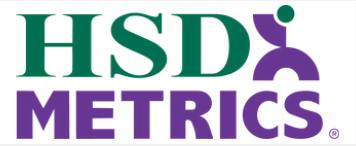We are starting to see signs that government leaders across the country want (or have already begun) to prepare to restart the economy. The impact on workers in all industries will be profound. Even the most flexible and engaged employees find change to be a challenge in their work situations. In the last few months, employees have been asked to embrace change at epic levels. Human resource professionals will have just gotten through helping employees work remotely or perhaps finish paperwork from a furlough–just in time for the employers to re-open doors and ask employees to start becoming productive at “normal” levels.
We recently introduced our thoughts about the impact on employees as the economy starts to recuperate. We identified the Four Phases of Employer Workforce Recovery: Monitor, Prepare, Readiness, and Recover. As part of the Prepare phase, employers will need to understand the immediate impact on their workforce resulting from the crisis so they can re-assemble their workforces to meet the inevitable upcoming economic headwinds.
Employees were sent reeling when the COVID-19 pandemic first began and engagement took a backseat to survival, uncertainty, and sensemaking. Employee engagement has recently been more of a focus for employers, particularly as the labor force has tightened.
That being said, employees are resilient and there is an inflection point when they will be ready for their employers to build engagement again. Employees may have appreciated leaders who have taken control over the last few months, but the leadership strategies used during that time will not be effective during the rebuild phase.
During wartime when a sergeant is in a foxhole barking orders, team members are at full alert. They sense their life is in danger. They may be experiencing shock and uncertainty. They want a leader to bring them to safety. During a crisis, research clearly shows that team members are reassured by a confident, decisive leader telling them what to do. Scared employees in those situations may be hyper-engaged but only temporarily. As the crisis abates, employees become less and less motivated by control and command leadership styles. Leaders and organizations alike will need to prepare for that key point in time when employees become ready to regain control of their work situations. Employers who force engagement during a crisis – or even before the right time – will promote ill will with employees. A miscure from employers could make rebuilding difficult and could drive away mission-critical “A” players.
COVID-19 has affected each of us in different ways, from small businesses to large corporations. As some states return to work in the days ahead, we know that many employers open their doors to staff and customers with some degree of apprehension. We understand that companies may want to implement onsite screenings and temperature checks of their employees, but may not have the necessary resources to do so. Our customizable Return to Work Self-assessment report tool helps employers electronically remain in compliance and informed. Ensure your staff can confidently return to work with this pulse survey designed to track exposures to COVID-19, body temperature, and other measures.
Surveys are a great way to create a dialogue, so employers will know when they need to start using strategies to re-engage employees. Surveys aren’t just a one-way feedback model. For employees, they are part of a greater narrative that is the employee experience. For example, during the Prepare phase, employers need to stop asking if the remote work experience is tolerable and start asking how the employee feels about it in the present. If employees are expecting to stay remote, employers need to understand so they can appropriately plan communications and re-onboarding.
We have evolved our StayRight tool as a way to capture input from various workgroups at a regular “pulse” cadence. Our specific questions can help amplify current needs and future red flags. These are budget-friendly tools that we can offer as our way of giving back during and in the aftermath of the crisis. Feel free to contact us to discover how we can help.



